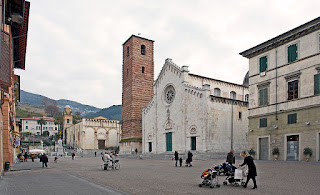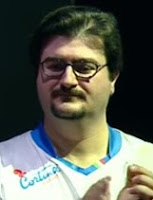NEW - Zita of Bourbon-Parma
The long life of the last Habsburg Empress
Zita of Bourbon-Parma, the last Empress of Austria and Queen of Hungary, was born Zita Maria delle Grazie Adelgonda Micaela Raffaella Gabriella Giuseppina Antonia Luisa Agnese on this day in 1892 on the family estate, the Villa Le Pianore, near Viareggio in the province of Lucca in Tuscany. Zita was the 17th child of the Duke of Parma, Robert I, and his second wife, Infanta Maria Antonia of Portugal, but her family was poor, even if it did claim descent from Louis X of France. The family villa was situated between Pietrasanta and Viareggio, occasionally moving to stay in Robert’s other property, Schwarzau Castle in Austria. After her father’s death, Zita was sent to a convent on the Isle of Wight in England to complete her education. For a time, Zita considered following the lead of three of her sisters and becoming a nun, but at the age of 19 she married Archduke Charles, the great nephew of Emperor Franz Joseph of Austria. The two had known each other as children and became reacquainted in 1909, at a time when Charles was under pressure to find a wife. They were married at the Schwarzau Castle in October 1911 and went on to have eight children together. Read more…
_____________________________________
Ottavio Missoni - fashion designer
Former prisoner of war was also an Olympic hurdler
The fashion designer Ottavio Missoni died on this day in 2013 at the age of 92 following an extraordinary life. He passed away at his home in Sumirago, 55km (34 miles) north-west of Milan, having requested his release from hospital in order to spend his last days with his family. Missoni was the co-founder of the Italian fashion brand Missoni, which he set up in 1953 with his wife, Rosita. The company became known around the world for its brightly coloured geometric knits and zigzag patterns and were among the pioneers of Italian ready-to-wear clothing lines. Earlier, he had been an infantryman during the Second World War, fighting at the Battle of El Alamein in 1942. He was captured by the 7th Armoured Division of the British Army, popularly known as the Desert Rats, and spent the remainder of the war in an English prisoner-of-war camp in Egypt. After the war, he pursued his passion for competitive athletics, becoming good enough to be selected in the Italian team for the 1948 Olympics in London, where he reached the final of the 400m hurdles event. Missoni was born in Dubrovnik, on the Dalmatian coast, in 1921. His mother was a countess. Read more…
______________________________________
Giovanni Paisiello - composer
Audience favourite with a jealous streak
The composer Giovanni Paisiello, who wrote more than 90 operas and much other music and was enormously popular in the 18th century, was born on this day in 1740 in Taranto. Paisiello was talented, versatile and had a big influence on other composers of his day and later, yet he was jealous of the success of rivals and is remembered today primarily as the composer whose passionate fans wrecked the premiere of Gioachino Rossini’s opera Almaviva, which was based on the same French play as Paisiello’s Il barbiere di siviglia, which was regarded as his masterpiece. Rossini’s opera would eventually be more commonly known as Il barbiere di siviglia, but not until after Paisiello had died. Nonetheless, Paisiello’s supporters still felt Rossini was attempting to steal their favourite’s thunder and many of them infiltrated the audience at Almaviva’s opening night in Rome and disrupted the performance with constant jeers and catcalls. History has shown that perhaps they were right to be worried: today, Rossini’s Barber of Seville is one of the world’s most popular operas, yet Paisiello’s is rarely performed. Read more…
______________________________________
Carlo Maria Giulini - conductor
Boy violinist who became a maestro of the baton
Carlo Maria Giulini, who conducted many of the world’s great orchestras in a career spanning 54 years, was born on this day in 1914 in Barletta, a town on the Adriatic coast 66km (41 miles) north of the port city of Bari. Appointed musical director of Teatro alla Scala in Milan in 1953, he went on to become one of the most celebrated conductors of orchestral performances, developing long associations with the Chicago Symphony Orchestra and the Philharmonia of London in particular, as well as the orchestra of the Royal Opera House, Covent Garden, the Vienna Symphony Orchestra and the Los Angeles Philharmonic. He became renowned for projecting serene authority from the podium, as well as his selfless devotion to the score. A handsome man who was always impeccably tailored, he had a magisterial presence. Initially most recognised for the breadth and detail he brought to the operas of Verdi and Mozart, he eventually became as well known for his orchestral repertoire. Carlo Maria Giulini was born to a Neapolitan mother and a father from Lombardy. Although born in the south of Italy, he was raised in Bolzano. Read more…
_____________________________________
Victor Emmanuel III abdicates
Last ditch bid to save the monarchy fails
Italy’s longest-reigning King, Victor Emmanuel III (Vittorio Emanuele III di Savoia), abdicated from the throne on this day in 1946. To try to save the monarchy, Victor Emmanuel III had earlier transferred his powers to his son, Umberto. When he formally abdicated he hoped the new King, Umberto II, would be able to strengthen support for the monarchy. Victor Emmanuel III went to live in Alexandria in Egypt. where he died, after just 18 months in exile, in December 1947. In contrast with his father, who had been King of Italy for nearly 46 years, Umberto reigned for just over a month, from 9 May to 12 June. The country had voted in a referendum to abolish the monarchy and Italy was declared a republic. Umberto went into exile and was later nicknamed re di maggio, the May King. Victor Emmanuel III had at one time been a popular King of Italy, ascending to the throne in 1900 after his father was assassinated in Monza. During his reign, Italy had been involved in two world wars and experienced the rise and fall of Fascism. At the height of his success he was nicknamed by the Italians re soldato (Soldier King). Read more…
.jpg)
.jpg)



.jpg)



.jpg)






.jpg)